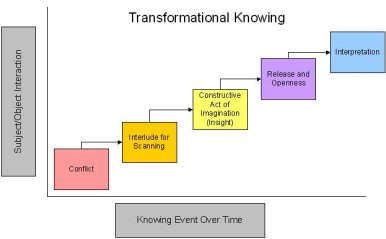In a previous post, I asked the question: How can training support the evolution of characteristics like attitudes and behaviors that are important to a given role? And its that question that I wanted to take up in this post. I’m sure there are many more perspectives on this but I wanted to offer at least one.
I think there are some formal and informal ways in which training can support the attitudes and behaviors defined in a competency model. Some of the formal approaches include
- Soft skills training such as interpersonal communication, conflict resolution, team leadership, etc.
- Personality evaluation tools like Herrmann Brain Dominance Instrument by Hermann International http://www.hbdi.com/
Informal approaches may include mentoring relationships where managers and peers support one another in personal growth. But I also believe that we can the instructional design that lies behind a course can consider what I call “secondary objectives.” These secondary objectives may not be main focus of the course, but underlying goals that can be integrated into the training session.
One approach may be to document these secondary objectives and design learning activities that creatively address attitudes and behaviors below the surface of the main goals of the educational experience.
One key to being successful in this type of approach is to understand the internal process someone may experience as attitudes and behaviors are changed. Dr James Loder suggests as individuals change they go through a series of stages:
- Conflict
- Internal Scanning
- Constructive Imagination
- Release and Openness
- Interpretation
Loder believes that insight, or in his language the “imaginative construct,” is the key to transformation. In The Transforming Moment, he suggests there are “Aha Moments” in our lives that can trigger insight. “Discontinuity effected by an imaginative construct is the key and center of the knowing event; indeed, it is just this discontinuity that makes transformation possible.” These knowing events have five steps that inform how people are transformed: conflict, interlude for scanning, constructive act of imagination, release and openness, and interpretation.
As an individual encounters change, he or she experiences a discontinuity, which facilitates the imaginative construct, or insight, that allows for the release of the old belief system and openness to a new one.
The diagram below shows how an individual may pass through the five steps inside of a knowing event. As the client has more interaction with the subject of the knowing event, he or she moves closer to interpretation, or the application of the new understanding.

Loder suggests that “Aha Moments” can trigger insight that creates an opportunity for change in understanding. In a single training event, we may not be able to facilitate growth in the most conflicted individual. But if we intentionally design training materials with the secondary objectives in mind, we may be able to facilitate the leap in understanding for someone who has already begun to reflect on their own attitudes and behaviors.
Obviously, Loder has done some deep level thinking on this subject that may help us consider how to facilitate the characteristics that may be desirable in an employee.
Writing training courses that not only explore the primary content but that also leverage the training event to facilitate and reinforce personal growth is a difficult challenge. But as competency models strive to identify the characteristics of the most successful people, training will need to offer resources that will facilitate and reinforce personal growth.
Related Articles
– How Do We Support Competency Models?
– Competency Models Drive Success